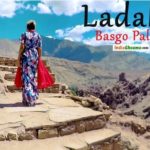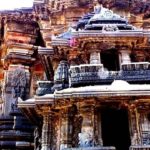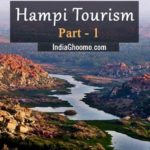Planning a religious trip to Mata Vaishno Devi Holi Shrine? Here is a good news for you. Indian Railways is all set to introduce the second Vande Bharat Express that will run between Delhi and Katra. The train has successfully completed all the require trials and is ready to take pilgrims to Katra, said Vinod Kumar Yadav,Railway Board Chairman. Vande Bharat … [Read more...] about Vande Bharat Express on Delhi-Katra route to Begin from October 2019
pilgrimage
Rudra Cave – Kedarnath, is the New tourist Attraction in Uttarakhand | How to Book
The famous "Rudra Cave" in Kedarnath, Uttarakhand, where PM Narendra Modi meditated in May 2019, is fast becoming a major tourist attraction in Uttarakhand. Since the cave's opening to the public for the first time in 2018, it is the first time that tourists have started booking in advance, said an official. About Rudra Cave The cave located around … [Read more...] about Rudra Cave – Kedarnath, is the New tourist Attraction in Uttarakhand | How to Book
Mysterious Karni Mata Temple in Bikaner – Rajasthan | Rat Temple
Bikaner in Rajasthan - India, is famous for its imposing palaces, forts and temples. 30 Kms from Bikaner, in the town of Deshnok is one of the strangest and unusual temples in the world - The Karni Mata Temple. The impressive architecture and the spiritual significance of Karni Mata temple makes it one of the most sought after tourist attractions in Bikaner. Mysterious … [Read more...] about Mysterious Karni Mata Temple in Bikaner – Rajasthan | Rat Temple
Ladakh – Basgo Monastery and Basgo Palace | Must Visit!
Ladakh's mesmerizing beauty, amazing history and fascinating heritage makes it a popular and most loved travel destinations in India. The surreal landscapes of Ladakh hide a number of mysterious places that have a legend attached to it. One such place is the Basgo Palace perched atop a stone and clay hill. Ladakh - Basgo Monastery and Basgo Palace Basgo Palace … [Read more...] about Ladakh – Basgo Monastery and Basgo Palace | Must Visit!
Hampi Sacred Centre – Group 2 – Hemakuta Hill | Virupaksh Temple | Sasivekalu Ganapati | Kadlekalu
Hampi is a UNESCO World Heritage Site situated along the Tungabhadra river in Karnataka's Bellary district. Hampi in the 14th Century, was declared as the capital of the glorious Vijayanagar empire and was the largest & richest cities in the World. Hampi Tourism Virupaksha Temple The Vijayanagar kings created a number of beautiful huge temples which were … [Read more...] about Hampi Sacred Centre – Group 2 – Hemakuta Hill | Virupaksh Temple | Sasivekalu Ganapati | Kadlekalu
Hampi Sacred Centre – Group 1 – Malyavanth Hill | RaghuNath Temple | Badavi Linga | Ugra Narsimha
Hampi in Karnataka's Bellary district, is a UNESCO World Heritage Site. It was the capital of the erstwhile Vijayanagar Dynasty which later got demolished by the Mughal invaders. Hampi Sacred Centre MAIN ATTRACTIONS Arid Landscape & Rich History - The surreal boulder laden landscape of Hampi dotted with patches of coconut and paddy fields attracts tourist from … [Read more...] about Hampi Sacred Centre – Group 1 – Malyavanth Hill | RaghuNath Temple | Badavi Linga | Ugra Narsimha
Chennakeshava Temple – Belur
The Chennakesava temple situated in Belur in Chikmagalur, Karnataka is home to the Hoysala temples from the 11th and 13th century. This temple was built by the Hoysalas during their 300 years rule in Karnataka and took over 102 years to get completed. When you step inside the temple, you meet beautifully carved sculptures and monuments which show the best of Hoysala temple … [Read more...] about Chennakeshava Temple – Belur
Halebidu – Hoysaleshwara Temple
Halebidu was the first capital of the Hoysalas who ruled Karnataka in the 12th century. Being 40 kms from Chikmagalur, Hoysaleshwara temple is made from ornately carved soapstone structures which are magnificent in their architecture. Halebidu - Hoysaleshwara Temple The temple architecture has rows or tiers of carvings; one such carving shows men going to work with chisels or … [Read more...] about Halebidu – Hoysaleshwara Temple
Hampi Tourism – Part 1 ( Hampi Overview)
Surreal & mesmerizing are the two words that best describe Hampi. Once that was the largest & richest cities in the World -The ruins of Hampi, as it's known today, is a huge open museum of architecture, history and religion on display. Recognized as a UNESCO World Heritage Site - Hampi is a village and temple town in northern Karnataka. Due to the excellent Location- … [Read more...] about Hampi Tourism – Part 1 ( Hampi Overview)
Hampi – Sunrise at Malyavanta Hill
Situated on the banks of the Tungabhadra River in Northern Kartanaka, India has a world heritage site called HAMPI - Once being the richest and largest cities in the world, today stands out for its sheer splendor in the ruins. Surrounded by Tungabhadra river on one side and hills on the other three, climbing to the top of any of them gives you a spectacular aerial view of the … [Read more...] about Hampi – Sunrise at Malyavanta Hill










